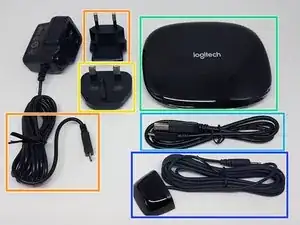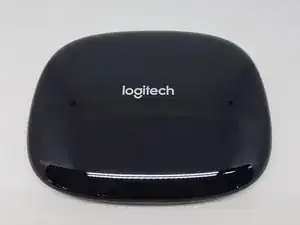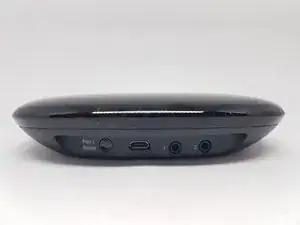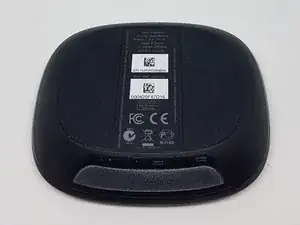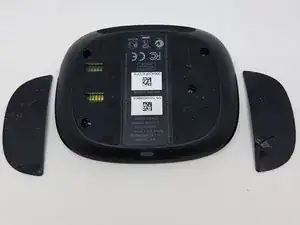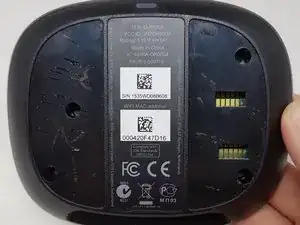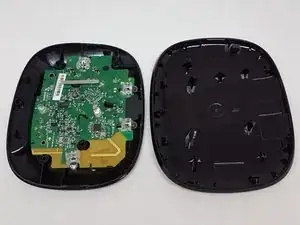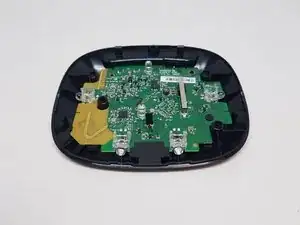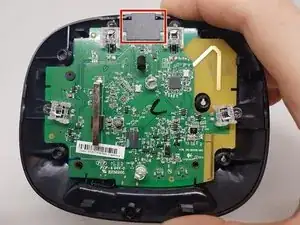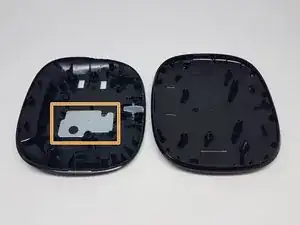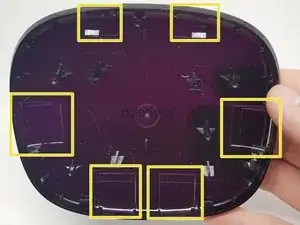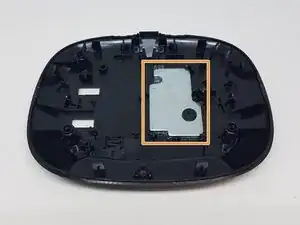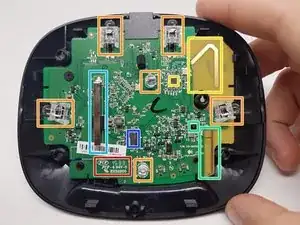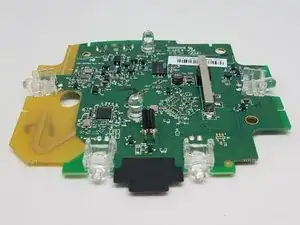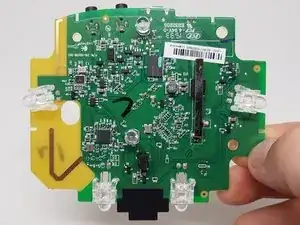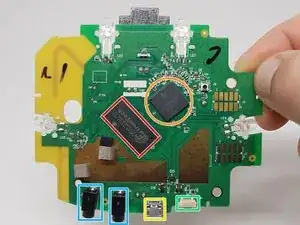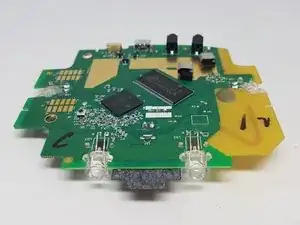Einleitung
Outline what you are going to teach someone how to do.
Werkzeuge
-
-
Powercord with a micro USB connector
-
European plug adapter
-
American plug adapter
-
Harmony Hub
-
Micro USB cable
-
IR mini blaster
-
-
-
Since we didn't find any screws we expected them to be under the soft foot pads.
-
We easily removed them with a utility knife
-
Now we can see 4 screws and 2 openings to the PCB.
-
I wondered what they could be but my guess is that they're used to test the PCB.
-
-
-
The case opens up easily when using a utility knife around the sides
-
This is a cover paper to make sure the status LED doesn't shine in the rest of the casing but just to the front
-
-
-
Inside the top case we find a load to give the product a little more weight
-
As you can see the top case is made a little thinner on the places where an IR led is present
-
-
-
PCB was manufactured by a Chinese company called FCF
-
There are 6 IR leds spread over the PCB
-
CC2544 SoC 2.4-GHz RF Transceiver and antenna
-
CSR8811 bluetooth chip and antenna
-
WiFi antenna from the AR9331 on the other side of the pcb
-
MX25L12835F 128Mbits serial Flash memory
-
-
-
EM6AB160TSE-5G 512 Mbits SDRAM
-
AR9331 2.4 GHz 802.11b/g/n SoC for AP and Router Platforms
-
Micro USB (data and power) - Can be used to extend this hub with a Harmony Home Hub Extender
-
Reset/Pair button
-
2x IR mini blaster ports (2.5mm)
-
3 Kommentare
Thanks for doing this!
Haluska -
Thanks for sharing this! I think I see an antenna port on that board, too. Interesting …
Now I’m wondering if I should take my chances and try to fix the loose micro usb port or just live with it.
Haluska -
Extremely helpful, thank you. But I also want to know the location of IR input which is used to learning IR commands from original remotes.
